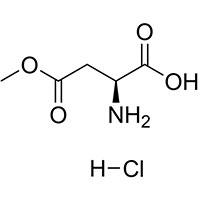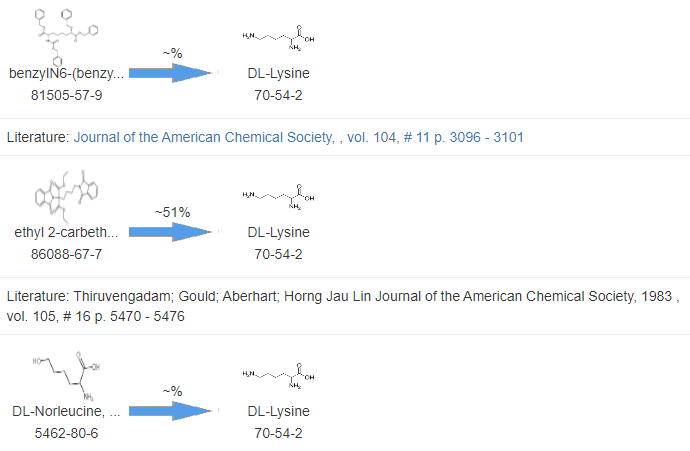L-Aspartic acid-β-methyl ester hydrochloride
Nanjing Finechem Holdings Co., LTD
Synonyms
(2S)-2-Amino-4-methoxy-4-oxobutanoic acid hydrochloride (1:1)
L-Aspartatic Acid 4-Methyl Ester Hydrochloride
4-Methyl L-Aspartate Hydrochloride
EINECS 240-880-5
L-Asparitc acid 4-methyl ester HCl
L-Aspartic acid, 4-methyl ester, hydrochloride (1:1)
MFCD00038972
H-Asp(OMe)-OH.HCl
H-Asp(OMe)-OH·HCl
(S)-2-Amino-4-methoxy-4-oxobutanoic acid hydrochloride
beta-Methyl L-aspartate hydrochloride
β-Methyl L-aspartate hydrochloride
Product Description
Introduction:
L-Aspartic Acid-β-Methyl Ester Hydrochloride is a chemical compound that belongs to the family of amino
acids. It is a derivative of L-aspartic acid, a non-essential amino acid that plays a vital role in
various biological processes. This product finds applications in the pharmaceutical, food, and cosmetic
industries due to its unique properties and potential uses.
Raw Materials:
L-Aspartic Acid-β-Methyl Ester Hydrochloride is synthesized using high-quality raw materials, including
L-aspartic acid and methyl ester hydrochloride. L-aspartic acid can be obtained from natural sources or
produced through fermentation processes, ensuring its purity and effectiveness. Methyl ester
hydrochloride is obtained through appropriate chemical reactions and subsequent purification steps,
ensuring the desired quality of the final product.
Production Process:
The production of L-Aspartic Acid-β-Methyl Ester Hydrochloride involves a series of carefully controlled
steps to ensure consistent product quality. The synthesis begins with the extraction or synthesis of
L-aspartic acid, which is then reacted with methyl ester hydrochloride under specific conditions. The
reaction mixture undergoes purification techniques such as filtration, crystallization, and drying,
resulting in a white crystalline powder as the final product.
Market Trends:
L-Aspartic Acid-β-Methyl Ester Hydrochloride has gained attention in various industries due to its
potential applications. In the pharmaceutical sector, it is used as a building block in the synthesis of
pharmaceutical compounds and as a component in drug formulations. In the food industry, it is utilized
as a flavor enhancer and in the production of food additives. Furthermore, its incorporation in cosmetic
products is driven by its potential benefits for skin health and anti-aging properties.
Amino Acid Status:
L-Aspartic Acid-β-Methyl Ester Hydrochloride offers unique advantages as an amino acid derivative.
L-aspartic acid itself is a non-essential amino acid, meaning it can be synthesized by the body.
However, the availability of L-Aspartic Acid-β-Methyl Ester Hydrochloride as a supplement provides an
exogenous source of L-aspartic acid, which can support various physiological processes, including
protein synthesis and neurotransmitter function. Its incorporation in formulations allows for targeted
delivery and potential enhancement of specific biological activities.
Conclusion:
L-Aspartic Acid-β-Methyl Ester Hydrochloride is a versatile chemical compound with diverse applications
in the pharmaceutical, food, and cosmetic industries. Its synthesis from high-quality raw materials and
stringent production processes ensure consistent product quality. The market demand for this product is
expected to continue growing due to its unique properties and potential benefits. With its various
applications and potential physiological effects, L-Aspartic Acid-β-Methyl Ester Hydrochloride offers a
valuable option for formulation and application in different industries.






